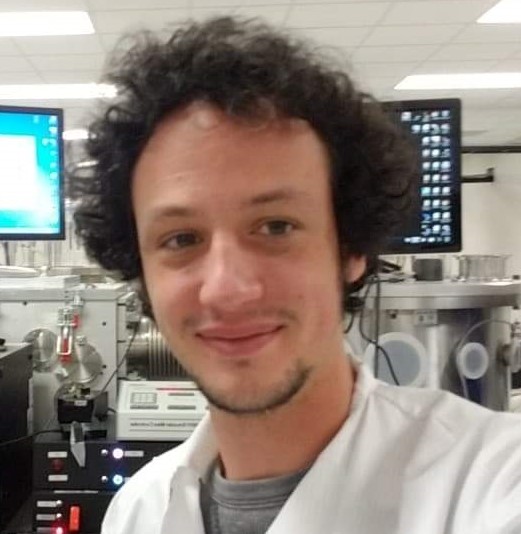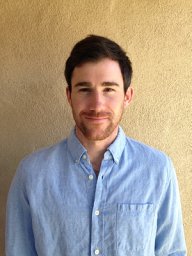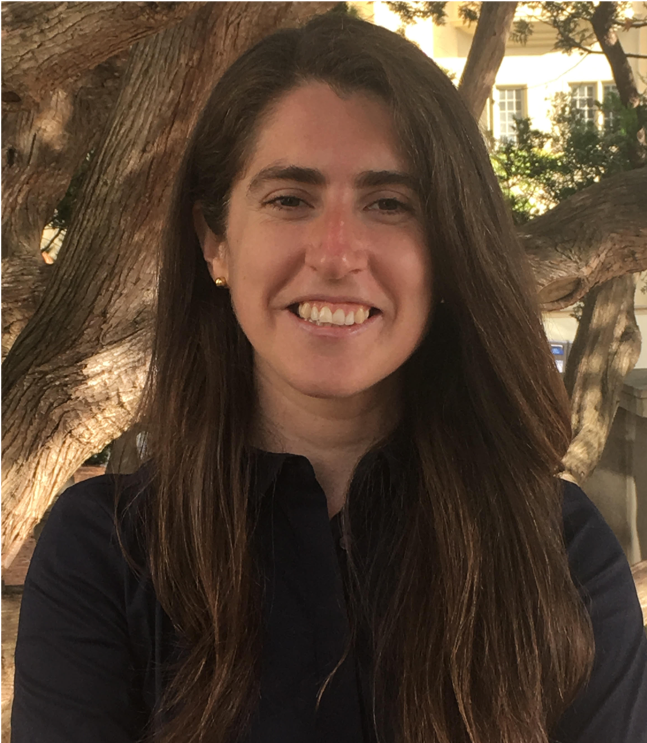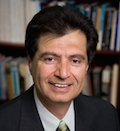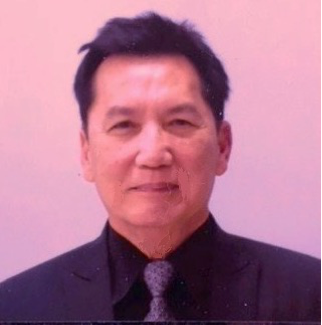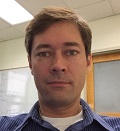Dr. Boedo investigates the physics of intrinsic rotation in tokamaks and the realization that asymmetric, thermal ion loss is a significant mechanism on determining a source of rotation at the edge of the plasma that then is transported into the core. Recent publications have identified and characterized the edge rotation from the theoretical point of view and compared it to existing models. Dr. Boedo has also made significant contributions in diagnostic development for plasmas. He is known for the development of high heat flux, fixed and reciprocating, scanning probes, such as that built for the NSTX tokamak, a rotating Langmuir probe, and also an innovative diagnostic to measure electron temperature with better than 400 kHz bandwidth. He is an Elected Fellow of the American Physical Society, which was awarded for his ground-breaking contributions to the studies of plasma drifts and intermittent plasma transport in the peripheral region of tokamaks. He is best known for his work in the characteristics, particle and energy transport, and dynamics of the edge and scrape-off layer and divertors of tokamaks, the leading candidate device for Fusion energy. Full Bio
Jan Kleissl
Director, CER
In a text mining review article of the top 1000 citations in solar forecasting, Yang et al. (2018) found that Kleissl had by far the most solar forecasting papers globally. Kleissl has published over 100 papers in the top journals of solar power resources, forecasting, and integration. Kleissl and his students and postdocs developed one of the first and most successful PV variability models for large solar power plants. The model has been released open source in Sandia National Lab's PV-Lib toolbox and used by 100s of researchers and practitioners globally. Kleissl also pioneered the field of sky imager forecasting and developed some of the most advanced physics-based modeling tools for sky imagery. In numerical weather prediction, Kleissl's group specializes in Stratocumulus clouds and their representation in simple and complex models of the atmosphere. Recently Kleissl focused on PV integration into electric distribution systems and developed optimal voltage control techniques for smart solar PV inverters. Because of his contributions to the field, Kleissl was invited to edit a book on Solar Energy Forecasting and Resource Assessment, which appeared in 2013 and has become the principal book in the field. As one of three US members, Kleissl was invited to serve on the International Energy Agency (IEA) PVPS Task 16 workgroup.
Associate Director
Carlos Coimbra
Professor Coimbra explores the intersection between experimental, theoretical and fieldwork methods to analyze and develop new technologies to harvest solar power in its diverse forms (direct, wind, hydropotential, etc). His research group uses a network of solar observatories distributed throughout several University of California campuses to harvest valuable ground data to be used in forecasting simulations with time horizons varying from seconds to multiple days. He is particularly interested in the development of highly nonlinear, evolutionary stochastic models for chaotic processes, and linking this knowledge to the development and active control of receiver-to-storage solar and wind systems.
Affiliate Members
Organized alphabeticaly by last name.
Mathieu Bailly-Grandvaux
His research focuses on the study of energy transport and particle acceleration in laser-driven plasmas through both experiments and simulations, with a particular interest in magnetized environments and applications in Inertial Confinement Fusion (ICF) and laboratory astrophysics. This work encompasses several aspects of laser-matter interaction and plasma physics in the High-Energy-Density (HED) regime, including ion acceleration from micro-structured targets, relativistic electron transport in shocked and/or magnetized plasmas, proton heating and transport in Warm Dense Matter (WDM), and heat transport and confinement properties of magnetized hot dense plasmas.
As sole principal investigator, his research on magnetized implosions at the OMEGA and National Ignition Facility (NIF) laser facilities has been funded by the U.S. Department of Energy, and he is co-leading projects funded by the National Nuclear Security Administration and the University of California Office of the President. His published peer-reviewed works have been cited more than 1000 times (h-index of 13).
Farhat Beg
Jose Boedo
Simon Bott-Suzuki

Dr. Bott-Suzuki investigates plasmas generated using high current capacitor-driven devices through both experimental and computational studies. The high plasma densities and magnetic fields created conditions of interest in many areas of high energy density physics, which includes the drive towards Inertial Confinement Fusion and subsequent fusion power generation. Such plasmas also have interesting hydrodynamic and magneto-hydrodynamic flow properties and can be used to study, for example, shock formation in radiatively cooled flows, and the propagation of plasma jets relevant to astrophysical objects. Dr. Bott-Suzuki carries out his research as part of both national and international collaborations, as well as developing new devices and experimental approaches on the UC San Diego campus. He is particularly interested in pursuing ways in which pulsed power plasmas and devices can be utilized to further understand broader plasma and physics issues. Full Bio.
Renkun Chen
Renkun Chen is an associate professor in the Mechanical and Aerospace Engineering Department at the University of California, San Diego. He received his B.S. in Engineering Thermo-physics from Tsinghua University in 2004, and his Ph.D. degree in Mechanical Engineering from the University of California, Berkeley in 2008. He did postdoctoral research at Lawrence Berkeley National Laboratory in prior to joining the faculty of UCSD in 2009. His laboratory at UCSD, Thermal Energy Materials and Physics (TEMP Lab), is exploring both fundamental micro- and nano- scale heat transfer and engineering applications of heat transfer in energy and biological systems. Current research topics in his group include concentrating solar power (CSP), thermal transport of high temperature materials and processes, alternative refrigeration technologies (thermoelectric, magnetocaloric, etc), thermal management of buildings and electronic devices, thermal interface materials, etc.
Zheng Chen
Dr. Zheng Chen is an assistant professor in the Department of NanoEngineering, Chemical Engineering and Materials Science Programs at University of California San Diego (UCSD). He received his B.S. from Tianjin University (2007) and Ph.D. from University of California Los Angeles (2012), both in Chemical Engineering. Then he served as postdoctoral researcher at Stanford University before joining UCSD in 2016. His research group, the Sustainable Materials and Energy Laboratory ( SMEL), mainly focuses on design and understanding novel molecules, nanostructured materials, functional polymers and their hybrid materials for energy storage and conversion.
Jorge Cortés
Jorge Cortés is a Professor in the Department of Mechanical and Aerospace Engineering. His research interests are in the areas of systems and control, network optimization, distributed decision making and control, game theory, network science, and complex systems. His research program seeks to unveil the science and engineering that explains and enhances the operation of network systems. The ultimate aim is to understand the mechanisms that make complex networks function they way they do, and to use this knowledge to develop systematic methods to design better networks. In the context of energy systems, he is interested in the distributed control of energy resources, the design of resilient algorithms under intermittent power generation and time-varying loads, distributed optimization of network systems for economic dispatch, optimal power flow, and frequency regulation, and data-driven modeling and abstractions of aggregations of distributed energy resources for participation in electricity markets.
Patrick Diamond

Dr. Diamond maintains an active interest in many theoretical problems pertaining to turbulence, transport and self-organization in plasmas fluids and non-equilibrium systems, in general. These include bifurcated mean flow states in turbulent shear flows, magnetic dynamos, confinement and turbulence in magnetized plasmas, flows in granular media, anomalous viscosity mechanisms in accretion disks and MHD turbulence. Patrick is also actively involved with several aspects of the Magnetic Fusion Energy Program.
David Fenning
Mike Ferry

Olivia Graeve
Prof. Graeve has been involved in many activities related to the recruitment and retention of women and Hispanic students in science and engineering and has received several prestigious awards including the Presidential Award for Excellence in Science, Mathematics and Engineering Mentoring in 2020. She has been inducted into the Tijuana Walk of Fame (2014), the Mexican Academy of Engineering (2016), the Mexican Academy of Sciences (2019), and has been named Fellow of the American Ceramic Society (2017). In addition, Forbes Magazine named her one of the 100 Most Powerful Women of Mexico (2017).
Ryan Hanna
Dr. Hanna's work focuses on energy systems analysis, optimization and simulation of energy systems, decarbonization, and energy policy. He has developed a stochastic investment planning model for distributed energy systems to study the potential for decarbonizing the electric grid with microgrids. Other research focuses include systems modeling of direct air capture of CO2 and carbon carbon and sequestration. He is interested generally in modeling, optimization, and simulation and energy system transitions toward net-zero carbon.
Dr. Hanna holds a Ph.D. and M.S. in mechanical engineering from UC San Diego. He was previously a postdoctoral fellow in the School of Global Policy and Strategy at UC San Diego and undertook his Ph.D. work, in part, at the International Institute for Applied Systems Analysis (IIASA) in Laxenburg, Austria, focusing on optimization and simulation of microgrids.Patricia Hidalgo-Gonzalez
Christopher Holland
Dr. Christopher Holland’s work focuses on understanding the fundamental dynamics of plasma turbulence in magnetically confined systems. The goal of his work is to help develop and improve predictive models of the turbulence, and transport of particles, energy, and momentum it drives, to aid in the realization of fusion energy as an economically viable commercial energy source. As part of this work, Dr. Holland and his collaborators lead validation studies of plasma turbulence using both massively parallel gyrokinetic codes and reduced gyrofluid models, focusing most recently on development of synthetic fluctuation diagnostics and incorporating them into new validation metrics. These studies are performed in close collaboration with the DIII-D experimental team at General Atomics, as well as other US and international fusion experiments, and the Controlled Shear Decorrelation Experiment (CSDX) at UCSD. Complementing these tokamak validation studies are efforts aimed at developing new theoretical models for understanding the coupling between small-scale drift-wave turbulence and macroscopic magnetohydrodynamic (MHD) instabilities in magnetically confined plasmas. Full bio.
Eric Hollmann 
Sonia Martínez Diaz
Professor Martínez Diaz''s research focuses on the control and coordination of multiple autonomous systems, which is crucial to understanding how modern robotic systems can be efficiently deployed. Her research combines novel ideas from control theory, dynamical systems, algorithmic robotics, geometry, optimization, and behavioral ecology. In the framework of geometric control, she has developed novel locomotion and trajectory planning algorithms for underactuated robots, which exploit the systems' inner nonlinear couplings in order to actuate the degrees of freedom for which one does not have direct inputs. Based on models of fish schooling, she has developed scalable and robust motion coordination algorithms for the optimal deployment and formation control of robotic networks. More recently, she has been working on the development of distributed estimation algorithms for multiple robots, which will allow them to cooperatively localize themselves in environments where GPS measurements are intermittently available. Based on fast sampling-based motion planning techniques, Martínez Diaz is also working on the implementation of opportunistic motion plans for the remote manipulation of hazardous materials using manipulators. More broadly, Martínez Diaz's research extends to the area of control of networked systems and network science.
John McCartney
Professor McCartney is a geotechnical engineer whose fundamental research focuses on the thermo-hydro-mechanical behavior of soils, foundations, and geosynthetics. Many of his research applications are in the area of energy geotechnics, including studying the effects of incorporating geothermal heat exchangers into civil engineering infrastructure (energy piles, thermal energy storage systems, landfill heat extraction), subsurface thermal energy storage systems, and thermal soil improvement. He is also focused on the use of waste materials like tire-derived aggregates as thermal insulators for heat storage systems. His research involves a combination of laboratory measurements of the thermo-hydro-mechanical properties of saturated and unsaturated soils, development and use of advanced sensors and testing methods in unsaturated soils, physical modeling of geotechnical structures at different scales (laboratory, geotechnical centrifuge, field scale), and use of numerical modeling to understand complex coupling encountered when subjecting soils to changes in temperature, water content, and externally-applied stresses.
Farrokh Najmabadi
Farrokh Najmabadi is a Professor of Electrical and Computer Engineering, and Directs the UCSD Center for Energy Research. He has authored over 140 articles and received several awards including 2003 UCSD Outstanding Engineering Professor and 2002 American Nuclear Society Fusion Energy Division Outstanding Achievement Award. Najmabadi received his Ph.D. in electrical engineering from the University of California, Berkeley in 1982.
Nguyen Minh
Dr. Nguyen Minh is an internationally well-known expert on solid oxide fuel cells (SOFCs) and solid oxide electrolyzers (SOECs) and has been involved in the development of SOFCs/SOECs and related energy technologies for the last twenty-five years. His experience covers a full spectrum of industrial/product Research and Development areas, ranging from technology assessment, strategy and roadmap formulation, fundamental and engineering study to processes and manufacturing development, stack/system design and operation, prototype demonstration, and cost/market analysis.
Dmitri M. Orlov
Dmitri M. Orlov received his B.S. with Honors and M.S. with Honors in Applied Physics and Mathematics from the Moscow Institute of Physics and Technology, Moscow, Russia in 1998 and 2000 respectively. He received M.S. in Aerospace Engineering and Ph.D. from the University of Notre Dame, IN, in 2005 and 2007 where his doctoral research work was centered on the numerical models for the single dielectric barrier discharge plasma actuators in CFD simulations of flow control applications. He then moved to the Department of Physics at the U.S. Air Force Academy, Colorado Springs, CO, where he worked on magnetohydrodynamics (MHD) and particle-in-cell (PIC) modeling of the atmospheric barrier discharges in application to flow control. Dmitri Orlov joined the UC San Diego Center for Energy Research in 2008. He is presently an Associate Research Scientist working at the DIII-D National Fusion Facility. His research is focused on the control of the edge instabilities in high-confinement regimes in present day tokamaks and future plasma burning devices including ITER, transport in the core and edge of the tokamaks under 3D non-axisymmetric perturbation fields, and heat and particle transport to the divertor surfaces. Dmitri Orlov published and co-authored more that 50 peer-reviewed papers and dozens of conference proceeding papers. His works were referenced more than 3900 times and his h-index is 28 (as of August 2021). He is a Member-at-Large of the American Physical Society Division of Plasma Physics Executive Committee (2020-2023), a Coalition for Plasma Science Vice-Chair (2021-present) and a member of the US Transport Task Force Executive Committee. More information can be found on his personal website.
Kalyanasundaram Seshadri 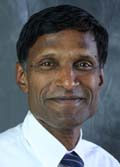
Professor Seshadri is an expert in combustion. He is interested in the chemical inhibition of flames, the combustion of diesel fuels and solid propellants, the mechanisms involved in the formation of pollutants, and the destruction of toxic compounds. He has helped demonstrate the usefulness of asymptotic analysis in the science of combustion. Asymptotic analysis employs the mathematical concept of a limit to efficiently identify critical boundaries, reactions, or other factors dominant in complex non-linear natural phenomena. In 1998, Seshadri applied an asymptotic analysis that succeeded in singling out the most critical interaction among hundreds ensuing when the superior industrial fire suppressant Halon 1301 extinguishes a flame. Halon 1301 is widely used by the military to quench fires in planes. But the chemical, also known as bromotrifluoromethane or CF3Br is no longer manufactured because it damages the Earth's protective ozone layer. Because Seshadri implicated bromine as critical to Halon 1301's fire-suppressing efficiency, and since bromine is the element in Halon 1301 that destroys ozone, the work signaled that the search for alternatives should switch from naturally occurring elements toward development of non-toxic synthetic substances. Dr. Seshadri can speak about many combustion related topics, including using fire to eliminate biochemical warfare agents.
Mark Tillack 
Mark Tillack is currently pursuing research on laser-matter interactions and applications of high energy pulsed lasers as well as magnetic and inertial fusion energy technology.
George Tynan
Professor Tynan's current research is focused on the plasma physics of controlled nuclear fusion as an energy source. He studies the fundamental physics of turbulent transport in hot confined plasmas using both smaller scaled laboratory plasma devices as well as large scale fusion experiments located around the world. In addition, he is investigating how solid material surfaces interact with the boundary region of fusion plasmas, and how the materials are modified by that interaction. He is also interested in the larger issue of transitioning to a sustainable energy economy based upon a mixture of efficient end use technologies, large scale deployment of renewable energy sources, and incorporation of a new generation of nuclear technologies such as advanced fission and fusion reactor systems. He is preparing a textbook on these topics to introduce science and engineering students to this critical issue.


